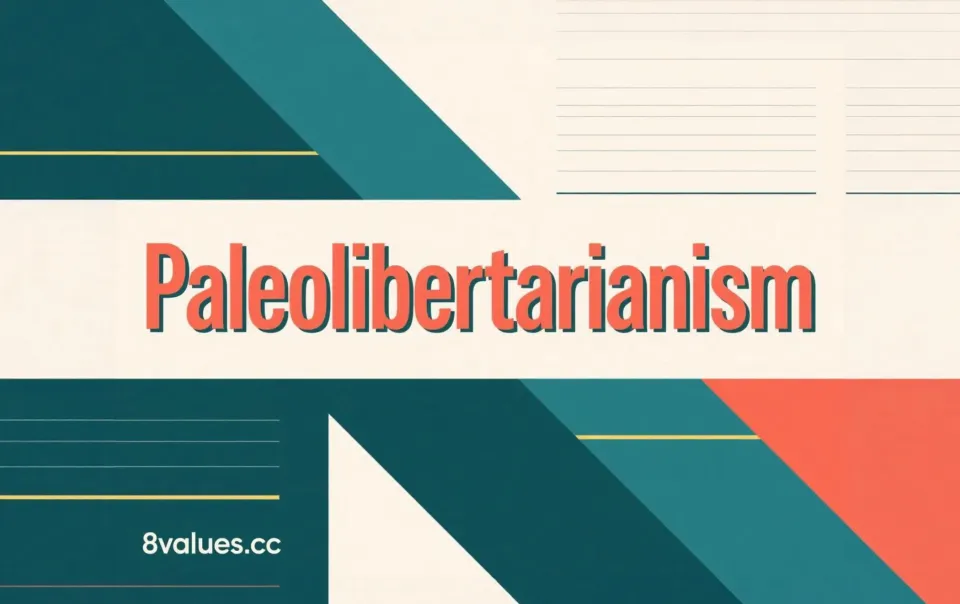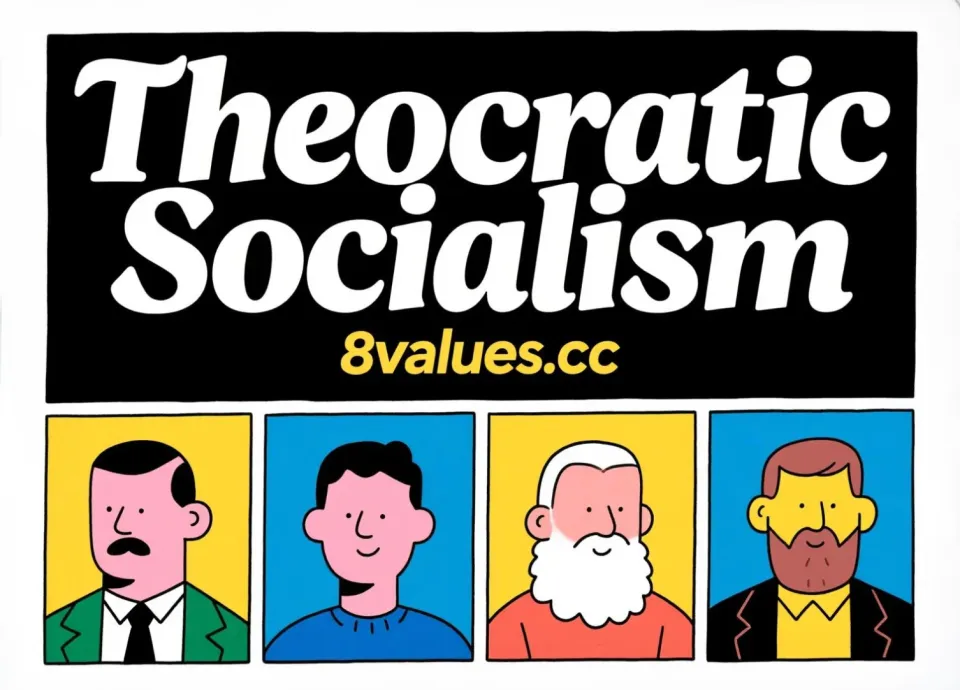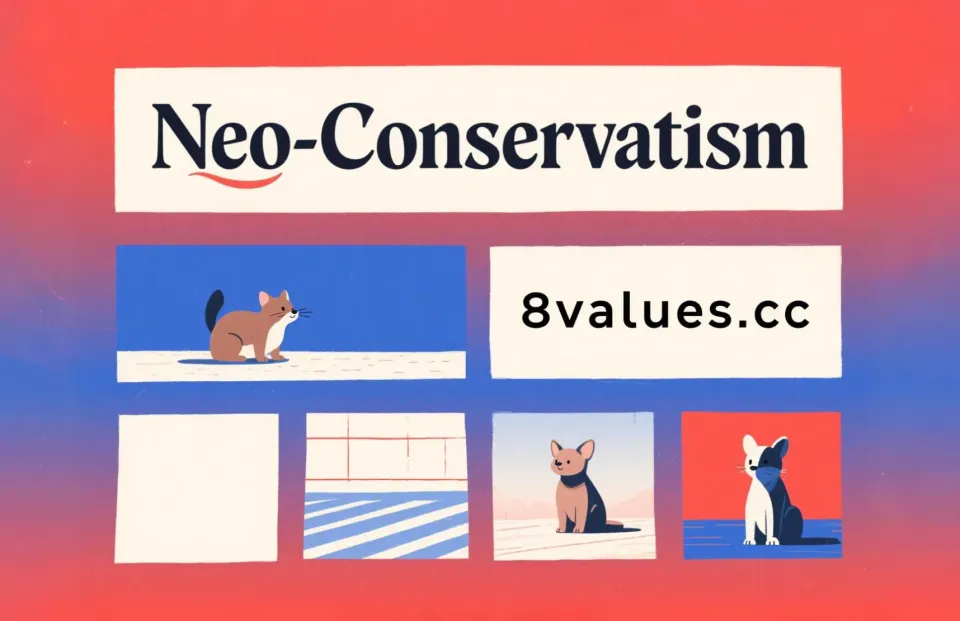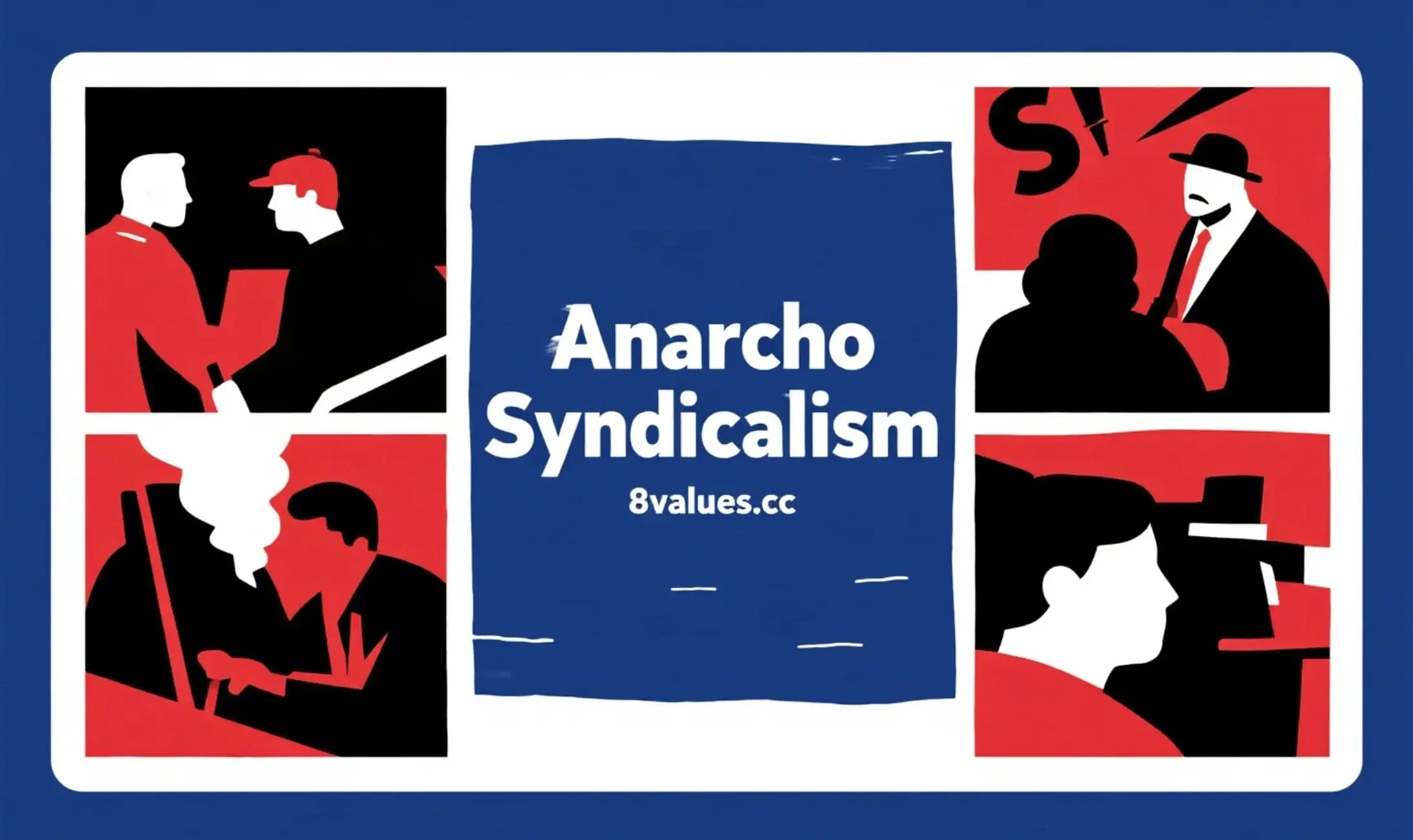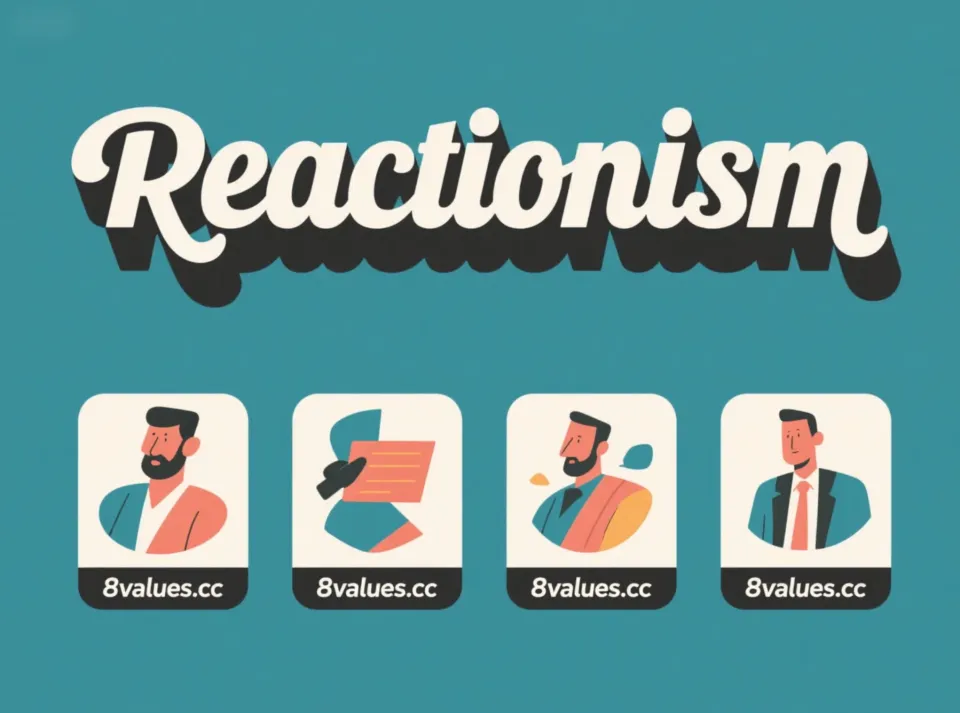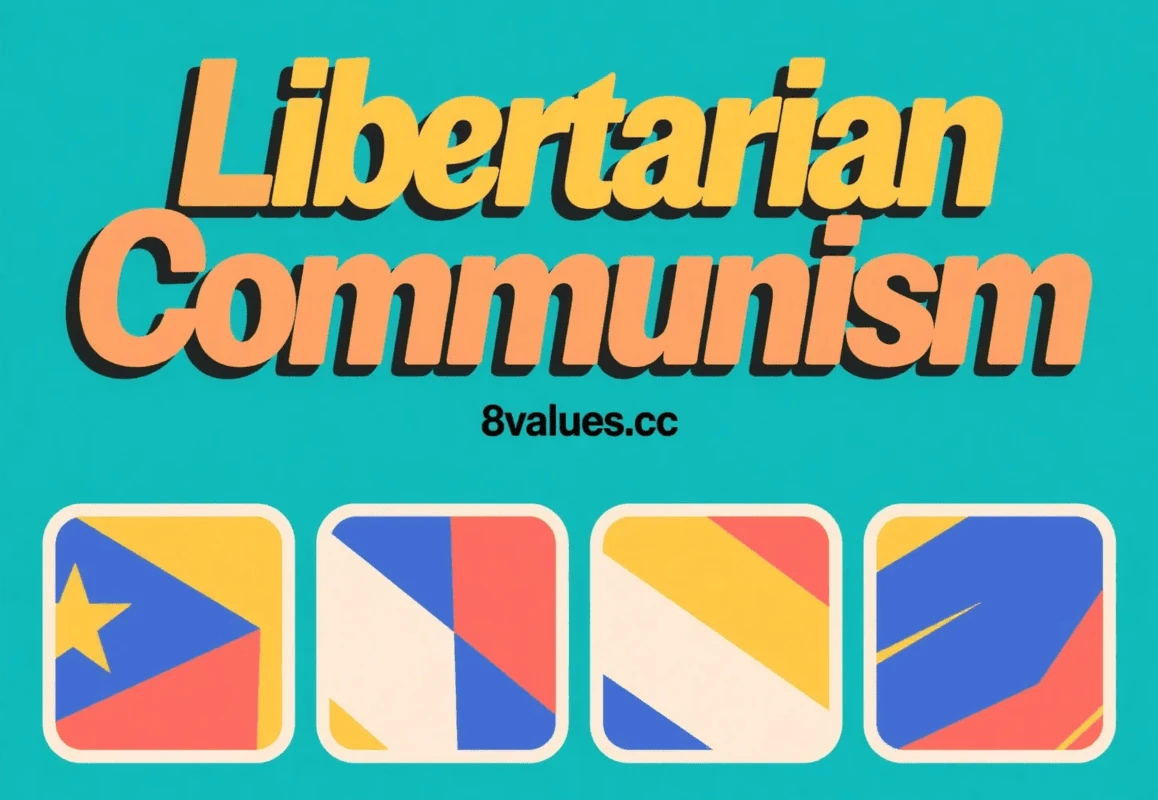An in-depth interpretation of Paleolibertarianism: the integration of free markets, traditional values and anti-statism
Paleolibertarianism is an important branch of libertarianism that combines a radical anti-statist stance with cultural conservatism. This article will provide a comprehensive introduction to the core definition, origins, economic and social propositions of paleo-libertarianism, as well as its differences from mainstream libertarianism, to help you understand this unique political ideology.
Paleolibertarianism is a trend within libertarianism that combines radical libertarian political claims with culturally conservative social philosophy. This term and ideological system was mainly developed and popularized by American anarcho-capitalist theorists Murray Rothbard and Lew Rockwell after the end of the Cold War. Through this strategy, they attempted to spread libertarian anti-government intervention ideas in a way that was more acceptable to the working and middle classes of the time.
The prefix "Paleo" is to distinguish it from what they call "neo-libertarians" or "lite libertarianism" and emphasizes a return to the roots of modern libertarianism, which is the classical liberal tradition that inherited the anti-war and anti-"New Deal" sentiments of the "Old Right" in the United States in the first half of the 20th century. If you want to delve deeper into your own political spectrum, you can try the Eight Values political orientation test . If you are interested in your own political values, you can explore more popular tests on the Political Values Ideology Test page.
The core ideological system of Paleolibertarianism
The theoretical system of paleo-libertarianism is based on the integration and emphasis of three main dimensions: extreme anti-statism, pure free market economy, and admiration of traditional cultural order.
Political and Economic Foundations: Radical “Anti-Nationalism” and the Austrian School
Paleolibertarianism inherits the essence of libertarianism and regards freedom as the highest political goal of mankind.
anti-statist stance Paleolibertarians believed that the state was the institutional source of evil and the greatest violator of property rights. Their stance on government is more radical than many other libertarians. This genre is deeply influenced by anarcho-capitalism, and some paleo-libertarians even advocate an anarchic society. They advocated the abolition of most government institutions and the complete rollback of the power of the state (The State) so that individuals could regain freedom of association , dominion over property , and the absolute right of self-defense .
free market economy Paleolibertarians are strong supporters of the Austrian School of Economics . The works of Murray Rothbard and Ludwig von Mises were crucial to the development of their ideas. They advocate a completely free market economy and completely oppose all government interference in the economy, including taxes, subsidies, price controls, antitrust laws, welfare state systems, and central banks. In their view, market interaction and voluntary activity are morally superior forms of conduct.
Foreign Policy: Non-interventionism Non-interventionism in foreign policy is a core principle shared by paleo-libertarianism and paleo-conservatism. They strongly opposed U.S. military expansion and interventionist foreign policy. For example, they oppose "selfish" wars, proxy bombing of Yemen, or support for the war in Iraq. They advocated "building wage walls, not wars" (Wage walls, not wars) and called for not interfering in other countries' internal affairs.
Cultural and Social Dimensions: The Roots of Traditionalism
The core distinction of paleo-libertarianism is its social stance of cultural conservatism . Ordered freedom , they believed, had a civilizing dimension.
Civilization foundation and tradition They believe that a free society must be rooted in traditional institutions and values such as family , church , community and religion , rather than relying solely on markets and abstract individual choices. Freedom without a cultural foundation will lead to the collapse of society, and the non-aggression principle of libertarianism is unique to Western civilization. Once Western civilization ceases to exist, this principle will be difficult to maintain. Rockwell once asserted that paleo-libertarianism "reconciled itself with religion as the cornerstone of liberty, property, and the natural order." They believe that Christianity's emphasis on rationality, objective moral laws, and private property made the development of capitalism possible.
attitudes towards social issues Paleolibertarians hold traditionally conservative attitudes toward "culture war" issues such as abortion, same-sex marriage, marijuana, and pornography. However, they oppose state intervention in these issues and instead advocate social pressure and privatization to regulate social behavior. For example, they oppose state legislation interfering with abortion (advocating for complete defunding), same-sex marriage (advocating ceremonies in private churches), and drugs (advocating legalization and ending the war on drugs). They tend to maintain social order and traditional morality through intermediary institutions such as family and community to protect individuals from state aggression.
Immigration and freedom of association A distinctive feature of paleo-libertarianism is its skepticism toward mass immigration and its opposition to multiculturalism. They believe that immigrants will impact native culture and social order. While they do not believe that states should take radical measures to completely restrict immigration, they emphasize the right of private property owners to regulate the movement of people and exclude immigrants based on the principle of voluntary association. Economist Hans-Hermann Hoppe put forward the view of processing immigration on the basis of private property, arguing that the current open border system is an infringement of private property, and advocated the establishment of covenant communities (covenant communities), based on agreements that restrict certain behaviors (such as opposition to communism, democracy, or sexual depravity).
The historical evolution and strategies of Paleolibertarianism
The rise of paleo-libertarianism stems from internal divisions within libertarianism and adopts a unique political strategy aimed at appealing to the broader American public, especially those in the middle class who are dissatisfied with the status quo.
The Rothbard/Rockwell Split and the Return of the “Ancient”
In the 1970s, the libertarian movement emerged in the United States, but it soon became divided over strategic and philosophical differences. One of the most famous splits occurred between the Cato Institute, funded by the Koch brothers, and Murray Rothbard. After Rothbard was expelled from the Cato Institute in 1981, he teamed up with Lev Rockwell to form the Mises Institute. They used the institute as a major platform for the dissemination of Austrian economics and paleo-libertarian ideas. Rockwell and others believe that libertarian organizations such as the Cato Institute based in the Beltway in Washington, D.C., have abandoned their complete libertarian message and adopted mainstream political and cultural values in order to gain acceptance from political elites. They criticize this "Lite Libertarianism" for equating freedom with an abstract concept and divorced from the realities of history, hierarchy, tradition, religion and culture.
The strategic alliance of “right-wing populism”
The paleo-libertarian strategy, known as right- wing populism , aims to radicalize citizens against the state. In 1992, Rothbard proposed a strategic blueprint for the Paleo Movement in his article, which foreshadowed the rise of populist politics a few years later. He envisioned a "paleo-coalition" composed of "paleo-libertarians" and "paleoconservatives."
- Purpose of the Ancient Alliance : An anti-welfare state, anti-interventionist alliance that aimed to reshape the prosperity before World War II.
- Collaboration and rupture : Rothbard and Rockwell supported paleoconservative candidate Pat Buchanan in the 1992 presidential election. However, the alliance came to an end in 1995 after the disintegration of the John Randolph Club due to Buchanan's excessive faith in economic planning and centralized state power, as well as ideological and personality incompatibilities between the two parties.
Despite the setbacks, the idea of appealing to disaffected working- and middle-class people, bypassing traditional media and appealing directly to the masses, appeared to become a reality in later political developments, especially after Donald Trump won the presidential election in 2016.
The differences and connections between Paleolibertarianism and mainstream trends of thought
Paleolibertarianism is right-libertarianism on the political spectrum. Its differences from mainstream libertarianism and paleoconservatism in its cultural, economic, and governmental roles are key to understanding its ideological positioning.
Fundamental differences with mainstream Libertarianism
The two are highly consistent in terms of economic freedom, and both firmly oppose government intervention in the economy. However, there are fundamental differences in their cultural stances and perceptions of the sources of social order .
| Dimensions | Paleolibertarianism | Mainstream Libertarianism/"Lite" |
|---|---|---|
| cultural stance | Traditionally conservative, opposed to sexual liberation and multiculturalism, emphasizing traditional morality/religion as the cornerstone of freedom. | Culturally neutral or left-leaning, supporting individual choices such as LGBTQ+ rights and abortion. |
| government role | Tends to anarcho-capitalism and pursues the complete abolition of the state. | Tends to minimize government (Minarchism), retaining limited defense and legal functions. |
| social order | It is believed that social order comes from traditional customs, family and community consensus . | It is believed that social order comes from individual rationality and the spontaneous order of the market , and traditional customs should be abandoned if they restrict freedom. |
| immigration policy | Skeptical of mass immigration, advocates the right of private property owners to restrict the movement of people. | Supports free migration and open borders as part of personal freedom. |
Paleolibertarians criticize mainstream libertarians (such as Cato and Reason magazine types) for viewing freedom as a universal pursuit, arguing that they underestimate " the civilizing dimension of freedom ."
Boundaries to Paleoconservatism
Paleoconservatives generally understand the cultural and civilizational dimensions of ordered liberty and have no hesitation in supporting immigration restrictionism.
However, there are significant differences between the two in their attitudes towards state power :
- Paleolibertarian : Radical opposition to the state, believing that the state is an agent of evil.
- Paleoconservatives : Less concerned with the state as an agent of evil and generally more concerned with culture wars (e.g. same-sex marriage, marijuana, pornography, abortion). Some paleoconservatives even tend to use state power to advance their traditional values and support protectionist measures.
Paleolibertarians firmly reject attempts by the state to intervene in these cultural issues through legislation.
Modern influences and political legacy
Paleolibertarianism, although active in academic and niche political groups, has largely influenced the recent wave of right-wing populism.
Key people and organizations The Mises Institute is the leading institution of paleo-libertarianism. In addition, important advocates include Hans-Hermann Hoppe, Ilana Mercer, Thomas DiLorenzo, and Joseph Sobran. Former U.S. congressman Ron Paul brought together many libertarians in his presidential campaign, and his legacy has partly preserved this tradition of hostility to free markets and anti-state power.
contemporary political resonance After the rise of populism in the 2010s, the anti-government, anti-interventionist stance of paleo-libertarianism found resonance in anti-establishment movements. For example, some people active in the paleo-libertarian sphere of the 1990s sympathized with Donald Trump's rhetoric against the Republican and Democratic establishments. Paleo-libertarians such as the South African writer Ilana Mercer have aligned themselves with Trump and broader populist movements in the West. Within the Libertarian Party, the ancient libertarian faction of the Mises Caucus became the dominant faction of the party's National Committee after the 2022 Libertarian Party National Convention. In addition, Argentine President Javier Milei is also listed as an important supporter of this trend of thought.
Summary and testing Paleolibertarianism attempts to find a balance between free market economics, individual freedom and cultural conservatism, opposing the interventionism and globalism of modern states. The uniqueness and radicalness of its ideological system allow it to maintain an important, albeit non-mainstream, position in libertarianism.
If you want to know where you stand on multiple dimensions such as economics, culture, politics, etc., you can try a more sophisticated test model, such as the 9Axes Political Ideology Test . At the same time, in order to more clearly locate paleo-libertarianism’s position on the political spectrum, you can take the LeftValues test and the RightValues test respectively to better understand how this school integrates the traditional values of the right into its libertarian framework. Visit the 8Values Political Ideology Test website to learn more, and read our official blog for more in-depth analysis of political ideology.
